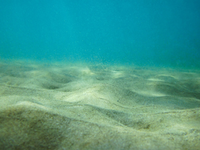Difference between revisions of "Insoluble"
| Line 1: | Line 1: | ||
| + | ==Key Stage 2== | ||
| + | ===Meaning=== | ||
| + | An [[insoluble]] [[material]] is one that cannot be easily [[dissolve]]d in [[water]]. | ||
| + | |||
| + | ===About Insoluble Materials=== | ||
| + | : [[Insoluble]] is the opposite of [[soluble]]. | ||
| + | : When an [[insoluble]] [[material]] is put in [[water]] it can still be seen, no matter how much you stir the [[water]]. | ||
| + | : An [[insoluble]] [[material]] will make [[water]] appear cloudy. | ||
| + | |||
| + | ===Examples=== | ||
| + | {| | ||
| + | |[[File:SandWaterMixture.png|center|200px]] | ||
| + | | style="height:20px; width:200px; text-align:center;" |Sand is [[insoluble]] because it does not [[dissolve]] in [[water]]. | ||
| + | |} | ||
| + | |||
| + | |||
==Key Stage 3== | ==Key Stage 3== | ||
===Meaning=== | ===Meaning=== | ||
Revision as of 15:32, 13 December 2019
Contents
Key Stage 2
Meaning
An insoluble material is one that cannot be easily dissolved in water.
About Insoluble Materials
- Insoluble is the opposite of soluble.
- When an insoluble material is put in water it can still be seen, no matter how much you stir the water.
- An insoluble material will make water appear cloudy.
Examples
| Sand is insoluble because it does not dissolve in water. |
Key Stage 3
Meaning
An insoluble material is one that cannot be easily dissolved in water.
